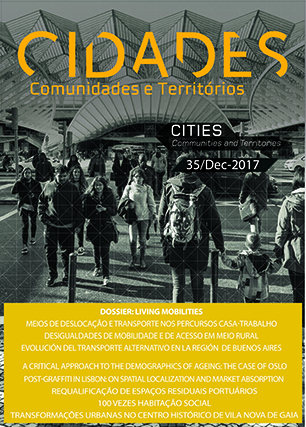Post-Graffiti in Lisbon: On spatial localization and market absorption
Mots-clés :
street art, Lisbon, transgretion, market absorption, post-graffitiRésumé
Graffiti-making as a disruptive art has been historically well located within the politics of territoriality/transgression, deindustrialization/decline, appropriation/affirmation and other inter-related frameworks. Such historicizations exist in parallel to the history of institutionalization of graffiti-making, leading up to the emergence of the phrase post-graffiti in the discourse. The post-graffiti has alternatively and independently also been used to describe an empirically observed shift in graffiti making practices; from the typographical to the iconographical.
In this context, the operationalization of a set of urban intervention policies by the Lisbon City Council, that were designed to institutionalize, sanction and take control of graffiti-making, provides an interesting inroad into the processes that underlie its market absorption. Through a field analysis of street art in Lisbon as well as an examination of the intervention policy and its consequences, this paper argues that the intervention policies and associated public rhetoric manufactured a binary of order-disorder within the practices of graffiti-making, enabling graffiti and graffiti-making practices in Lisbon to be spatially localized, facilitating market activities. For the graffiti and the graffiti-makers, state/administrative sanction and the emergence of market activities meant heightened security, safety and a greater audience field – conditions that made iconographical aesthetics a virtue and a necessity. Thus, the post-graffiti shift has to be understood within the context of institutionalization. These processes are to be looked at as particular conditions of the neoliberal capital.
Téléchargements
Publié-e
Numéro
Rubrique
Licence
Cidades, Comunidades e Territórios by DINÂMIA'CET-IUL is licensed under a Creative Commons Atribuição-Uso Não-Comercial-Proibição de realização de Obras Derivadas 4.0 Unported License.Permissions beyond the scope of this license may be available at mailto:cidades.dinamiacet@iscte.pt.






